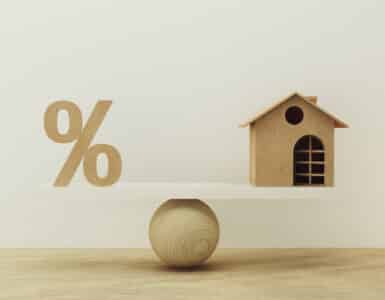So, you want to buy a home. Exciting! But as you may also be aware the mortgage process can be convoluted and confusing. Try to get ahead of it as much as you can, says Susie McLane, Wealth Management Advisor. “If you do all the legwork in advance, it makes the process along the way easier and smoother.” Prequalification and preapproval are steps you should take prior to house hunting and speaking with sellers. Why? They give you an idea of what you can reasonably afford, and they make you look more serious in the eyes of sellers.
But while those words “prequalification” and “preapproval” sound so similar, they’re not identical. Exactly what’s the difference between the two?
Main Differences
“The primary difference is that a prequalification is largely an opinion of the size of the mortgage your income will support, and, coupled with funds you have available for a down-payment, the price range of homes you are likely to be able to buy,” says Keith Gumbinger, Vice President of HSH.com Meanwhile, a pre-approval is more precise and actionable. “Your actual financial capabilities are evaluated by a lender, who will provide a document that shows the actual amount a lender will allow you to borrow.”
Essentially, with prequalification, you’re getting an estimate. With pre-approval, you’re getting a concrete number — and consequently, the process is more extensive. Here’s what prequalification and preapproval specifically entail:
Prequalification
Prequalification is typically the first step in getting a mortgage. You can do it in-person, via phone, or online, and it shouldn’t take long. You’ll approach a lender, and they’ll evaluate the basic financial information you provide (income, debts, assets, and other liabilities you may have). Importantly, prequalification does not include a credit check. The lender won’t give you specifics about rates, but they’ll go through various mortgage options and how they might suit you. “At its core, it’s just a working ballpark figure,” says Gumbinger.
To be prequalified, you can shop around online and do it yourself, but some realtors actually have someone in-house who will do it for you, or a relationship with someone who can, says McLane. Essentially, prequalification is your first way into the mortgage process. It will get the ball rolling, so you’ll know more about your situation.
Pre-approval
“The pre-approval process sees the borrower actually begin the mortgage process with a lender,” explains Gumbinger. You’ll submit an application, and you’ll provide actual documentation covering income, debts, and assets. You’ll also allow the lender to pull your credit score from a reporting bureau — that means it involves a hard credit inquiry, whereas prequalification does not.
With this information, the lender will produce a conditional commitment letter listing the exact amount they’re prepared to let you borrow. This conditional commitment is subject to you finding a suitable home to buy that passes required appraisals and inspections. “The conditional commitment amount can change if interest rates rise significantly, and the conditional offer usually has a finite period of 30-to-60 days,” notes Gumbinger. “If no transaction has taken place, the borrower is usually asked to re-supply updated paperwork to the lender, and a new conditional commitment is made available.” During the pre-approval process you might lock in an interest rate that usually expires after a set amount of time. Sometimes, you pay a fee for pre-approval.
One or Both?
Note that you don’t need to be prequalified to get a pre-approval. But people often do both, says McLane. “I think for potential buyers, it’s a good idea to do both. You don’t want to put an offer in on a home you can’t afford. How do you know how much you can afford without going through these steps? You don’t want to put the cart before the horse.”
Look at it this way: A buyer who isn’t preapproved can make an appealingly high offer to a lender, but then what if they don’t get approved for a mortgage of that amount? Now the seller is out a buyer, something they’d like to avoid. “Having a bona fide offer of mortgage financing in hand assures the seller that your offer is serious and not contingent on trying to locate financing,” says Gumbinger. “It’s also reassuring for the buyer, who knows that a major component of the transaction is already well under way when a contract to buy a home is signed.”
Good luck, and happy hunting!
With Molly Povich






